Content |
|---|
History
The Australian Cattle Dog It is a dog originating in australian. In comparison with other races its history is very well documented, because it is a relatively recent.
By the early 19th century the cattle industry in Australia had grown out onto the plains and onto the vast expanses of land. The cattle had become wild and rude beasts, the Smithfields, until then their dogs of grazing, already frequently lost control of livestock. These dogs were overcome by the heat and the distances they traveled to move the cattle, they also tended to bite and bark a lot, because they knew how to graze sheep and not cattle, and sometimes with horns, they were injured. This problem existed in both Australia and the United States, and while Americans were inventing cowboys (Cowboys) Australians invented dogs jeans.
In 1830 a cross of Smithfields took place with Dingoes, the primitive dog that lives in Australia and killed the cattle. This, be regarded as a pest at that time, He went on to be the best contribution to this race. It was believed that dogs more adapted to the climate would be obtained, to work and quieter. Were dogs of red hair, silent but biting even more. This breed was unsuccessful and died.
In 1840 another farmer with the same concern but different approach, imported a couple of Bearded Collie blue-haired scotland, were dogs that barked much. The offspring of this couple crossed it with the Dingo and got a silent working dog with either blue or red fur.
Other races introduced to this cross: the Dalmatian in order to ensure that dogs will also work with horses and more faithful and reliable for masters. The Kelpies black or straw color, Australian foresee dogs; to reaffirm their skills in the jobs that had been lost with the crossbreeding of Dalmatians. The influence of Dalmatians I create puppies with white fur at birth and that changes color at three weeks of age from a smooth coat to another gray. Of the Kelpie straw colored markings on legs, chest and head. The end result was an active dog, compact, with the caution of Dingo, the reliability of a Dalmatian, the skill of a Collie and Kelpie, and a unique coat coloration in the world.
In the early 1890's Mr.. Robert Kaleski became interested in these dogs; as he lover of them and at the same time journalist decided to give to know this race and make it achieved in 1903 the Kennel Club of Wales accepted the first standard of the breed. He firmly believed in the important contribution of Dingo blood to herding cattle and eventually introduced Dingoes to crossbreeds to maintain the efficient heeler style..
In November of 1988 It was formed in Australian Cattle Dog Club of America in California. The 1 May th 1980 they petitioned the AKC license (American Kennel Club) and the 1 September of that year they were awarded.
In all these years Australians livestock herders have been gaining ground both at work and in the heart of the masters. They are known with many names or nicknames: “Blueys” (azulitos), “Blue Dogs” (blue dogs), “Heelers” (taloneros), “Queenlad heelers” (taloneros Queens), “Blue heelers” (Blue taloneros), “Red heelers” (Red taloneros) and so are erroneously called “Dingoes”.
Physical characteristics
The Australian Cattle Dog they are a moderate breed in all respects. They must be balanced, symmetric, robust and compact. Judging this race we must seek a harmonious dog.
We often hear: “It must be of large head”; This is fine if the body is in line with the head. The standard of the breed does not require a large head but a head according to the body, or of a heavy bone structure, If disagrees with the rest of the dog.
The Australian Cattle Dog he's a working dog, created strong, compact, symmetric, with the ability and willingness to carry out their assigned task no matter how difficult. Its combination of substance, power, balance sheet and strong muscle condition, leads to great agility, strength and endurance. Both too big and fat dog, as one too small and thin they would have serious faults. We must see the dog altogether. A large head does not make a good dog, not a very crude bone structure.
Remember: BALANCE SHEET, SYMMETRY AND MODERATION.
As its name says, It's primary function and no one matches, It is the control and management of livestock in open or closed extensions. Always alert, extremely intelligent, look-out, brave and reliable, with a total devotion to duty, making it the ideal dog.
A dog that is gentle in nature, outside of obese condition, will lose points. They are athletes and they should always give that appearance.
As far as the physical aspect is concerned, we point out the following...
- The head It is strong and it must be proportional to the body of the dog, to maintain its overall conformation. The wide skull is slightly curved between ears. The mejilla5 are muscular, Neither crude nor prominent, strong jaw. The lips are clean and tight. !.nose is always black. A gluttony for measuring head is from the tip of the nose, passing between the eyes, stop ear tip; through the skull back through the eye to the tip of the nose; They must be measured an equilateral triangle.
- The eyes: they are oval shaped, medium-sized, Neither prominent nor sunken, they should express State of alert and intelligence, are dark brown in colour.
- The ears: they should be of moderate size, preferable to small to large, broad base and pointed tip, or round as spoon, Neither plicate of bat. Placed separate head inclined outwards. They must be thick, fleshy and covered with weight on the inside. The teeth would be strong, with equal separations, with grip, bite and scissors, the lower incisors just before close and playing at the incisive superiors.
- The neck: is very strong, muscular, It allows you to turn the head to the body, It must not be loose or have hanging skin.
- Front rooms: the forearm should join the shoulder almost 90%. There is a tendency in the short forearms that does not allow you to the correct length needed. They must be just as the cross to the elbow to elbow on the floor. It must not exceed the width of the chest to the elbows. The creation of exaggeration is a problem in the race.
- Proportions: The dog must be 10% longer than high, many are unfortunately very short and it subtracts them movement and flexibility.
- Hindquarters: strong, widths, muscular. The rather long rump to slant, long thighs, wide and well developed. Seen from the back should be parallel and rights, not very close to each other, not very separate.
- The legs: round, with fingers long and together. Hard bearings, short and strong nails.
- The tail: placed moderately downward, following the contour of the thigh and rump of length until reaching the hocks. When rest with a slight curve. Movement or shaking the tail should be raised. At no time should the tail be carried beyond a vertical line from the root (or coiled). The tail should have abundant fur.
- When it is in movement and walking: the action is real, free, flexible to tireless, and the movement of the shoulders and forequarters is in unison with the strength of the hindquarters. The rapid and unexpected movements ability is elementary. When they trotting legs tend to join the ground as the speed is on the rise.
- Weight and height: The male can be measured in 46 cm to 51 cm., and weigh between 20 and 26 kg. The female can be measured in 43 cm to 48 cm., and weigh between 18 and 23 kg. Here there is almost no problems, because height requirements have been maintained with ease.
- Fur: The hair is soft, with double layer being the shortest denser.; the hair of the longest layer is closed, each hair is, straight and hard, Why which is waterproof. On the hind legs the coat is long where join the thighs. In the head (even within the ears) up to the front of the legs the coat is short. Around the neck, longer and thicker. A very short or very long hair will be a lack. Curly hair in wavy is evident in the very adult females.
- Colors of the mantle:
- Blue: the color can be blue, graying blue, Blue mottled with or without other brands. Allowed in brands are, black, Blue or straw in the head, preferably symmetrical. Paws straw halfway and extending to the front to the chest and throat, and in the jaws. The Undercoat may be straw in the body where it stands not out to the blue upper layer. The black marks on the body are not desirable.
- Red: the color should be very smooth throughout the body, including the bottom layer (either white or cream), with or without red marks on the head. Symmetrical marks are desired. The red marks on the body are permitted but not desired.
There are two main problems in color. The blue dogs tend to black and the second are the Red dogs without freckles. The latter is more than a problem, and one of the reasons why the reds are less dominant than blue.
Character and skills
The Australian Cattle Dog are very versatile and tireless workers who adapt various activities. They have been used as search and rescue dogs., bombs and drugs detectors, service and of course dogs, livestock grazing.
One Australian Cattle Dog not the ideal dog to lock him in a yard. These dogs require working and living together with people or at least the presence of someone to her around in the absence of their day-to-day work. Isolated in the courtyard of a house in the city the edge to create problems.
The doctor. Harvey, Veterinary Australia, It has two of these dogs and also attends many more as patients. The comments: “The main problem that I see and that surpasses much to others, is the behaviour of these animals, everything is due to boredom and lack of exercise. Since they are very good guardians, people leave them in their backyard taking care of the House, completely ignoring their needs for exercise and mental stimulation”.
One Australian Cattle Dog can live in an apartment or on a ranch 20 hectares, the problem is not the space; It is the exercise and the time the owner puts into his dog. If no is given a job the dog, the same is going to invent:
Garden design: holes, plants cropped or out of place. Interior design: biting furniture tapestry, Chew chairs, dig a way out of the street, spreading garbage around the House, etc.
Another very common problem in cities is the natural tendency that these dogs have to protect their family and their home.. Even without training, they defend their territory from outsiders, including the milkman, the postman and anyone who is not familiar
Signs are commonly used in some rural places in the United States warning that the place is guarded by Australian Cattle Dog, to avoid that strangers come. If there are children running, screaming, any dog grazing naturally want to corner to put them under control; with biting and barking. If their children have guests it is preferable to keep the dog, because it will not allow their masters to be touched, even by game.
Social coexistence with children must be at an early age, dogs are taloneros by nature to instinctively chase other animals, however these dogs are very adaptable and can learn to suppress some of their natural inclinations. They are a perfect company for the family and their children. Once you know the dog and controls, their obedience will surprise your guests.
The doctor. Harvey also believes about coaching: “The Australian Cattle Dog it is very manageable; as a coach and scholar of the behavior, He catalogued it as the most adaptable dog who had worked with. However these dogs do not respond well to the method in which force them.
After several months of trying in vain to train a female with punishment straps, correct and other, opt for more motivational methods and the results were excellent. The confidence and enthusiasm can be seen in the position of the tail. A dog with a drooping tail, probably this suppressed or bored, a raised tail denotes a dog active and attentive.
Therefore the coaches that without the knowledge of the race, using traditional methods, such as the drawing with the collar of punishment; they invariably consider them fools, irritable and difficult. Coaches using positive methods, they believe that they are very attentive and willing to learn. Kalesky once said: “One Australian Cattle Dog should we remember a typical Dingo, and this is very important if we want to describe the race.
Before you choose the puppy we must stop to think for what they want to this dog, as a pet, as a guard dog, dog of grazing, dog for beauty exhibition, etc. Now let's see how they behave all the puppies in the litter. The one we see who fights all his brothers, would serve as a guard; the largest and that always sleeps because it is where most ate, would be great as a pet or for beauty, the more chiquitos resembling whirlwinds have learned to make an extra effort to obtain their food fought against the elderly, they would be ideal for the job. But there is no written rule the nature of the dogs molded it in a large percentage owners, in this way one very aggressive can be very manso and vice versa. Always take into account the opinion of the breeder.
Faults occur in all races, without them there would be no challenges for breeders. It is important to be attentive to the faults to overcome them. The faults are only an obstacle in our attempt to raise the perfect dog. Look at your dog critically, see the faults and strive to rectify them. Don't want to pretend that they there is no because there is not a perfect dog.
The loyalty of Australian Cattle Dog will keep him next to his master, more than anything in the world, They must be with the master, accompany you and assist you in everything. The easiest way of making them happy is having them on your side. If you leave the lane, It can be that the dog will bite the heels, But if you are the ideal type to have an Australian, This morderá you heart.
Australian Cattle Dog – Health
All dogs have the potential to develop genetic health problems, just as all people have the potential to inherit a particular disease. Run, do not walk, from any breeder that does not offer a health guarantee on puppies, to tell you that the breed is 100 percent healthy and has no known problems, or tell you that your puppies are isolated from the main part of the home for health reasons. A reputable breeder will be honest and open about the breed's health problems and the incidence with which they occur in their lines.. The problems observed in the Australian Cattle Dog include hip dysplasia, patellar dislocation, portosystemic shunts, progressive retinal atrophy (PRA) and genetic deafness.
Careful breeders screen their breeding dogs for genetic diseases and breed only the healthiest, best-looking specimens., but sometimes mother nature has other ideas and a puppy develops one of these diseases despite good husbandry practices. Advances in veterinary medicine mean that in most cases dogs can still live a good life. If you are going to have a puppy, ask the breeder about the ages of the dogs in their lines and what they died of.
Remember that after you have welcomed a new puppy into your home, has the power to protect you from one of the most common health problems: the obesity. Keep a Australian Cattle Dog with a proper weight is one of the easiest ways to prolong your life. Make the most of your preventive skills to help ensure a healthier dog for life.
Australian Cattle Dog – Grooming
The Australian Cattle Dog has a flat, hard coat that is resistant to rain and dirt. This makes grooming a simple task – only needs to be brushed once or twice a week to remove dead hair. For this you can use a bristle brush or slippery bristles. He will remove his short and dense undercoat once or twice a year, which will require more brushing. Other tools to keep on hand are a comb and undercoat rake.
The Australian Cattle Dog you will only need occasional baths if you get very dirty. Check your ears to make sure they are clean and dry and there is no evidence of infection. Your adult dog will need to have his nails trimmed about once a month, depending on wear. Puppies may need a weekly nail cut. Brush your dog's teeth regularly to promote good dental hygiene and fresh breath.
Characteristics "Australian Cattle Dog"
Coexistence is important that you have with your new friend. Before considering the acquisition of a dog of the breed "Australian Cattle Dog" you know certain factors. Not all breeds of dogs are apt to live in an apartment, you must take into account his character, their need for exercise, their interaction with other pets, their care and if you have small children, their level of tolerance towards them.
Adaptation ⓘ3.0 out of 5 stars (based on 1 review)
|
friendly dog ⓘ3.0 out of 5 stars (based on 1 review)
|
hair loss ⓘ3.0 out of 5 stars (based on 1 review)
|
|---|---|---|
Affection level ⓘ3.0 out of 5 stars (based on 1 review)
|
Need for exercise ⓘ5.0 out of 5 stars (based on 1 review)
|
Social need ⓘ3.0 out of 5 stars (based on 1 review)
|
Home ⓘ1.0 out of 5 stars (based on 1 review)
|
Toilet ⓘ1.0 out of 5 stars (based on 1 review)
|
Friendly with strangers ⓘ2.0 out of 5 stars (based on 1 review)
|
barking ⓘ4.0 out of 5 stars (based on 1 review)
|
Health ⓘ3.0 out of 5 stars (based on 1 review)
|
Territorial ⓘ5.0 out of 5 stars (based on 1 review)
|
Cat friendly ⓘ3.0 out of 5 stars (based on 1 review)
|
Intelligence ⓘ5.0 out of 5 stars (based on 1 review)
|
Versatility ⓘ5.0 out of 5 stars (based on 1 review)
|
Child friendly ⓘ5.0 out of 5 stars (based on 1 review)
|
Surveillance ⓘ5.0 out of 5 stars (based on 1 review)
|
joy ⓘ5.0 out of 5 stars (based on 1 review)
|
Australian Cattle Dog Images
Australian Cattle Dog Videos
Type and recognitions:
- FCI CLASSIFICATION: 287
- Group 1: Sheepdogs and Cattle Dogs (except Swiss Cattle Dogs)
- Section 2: Sennenhund Dogs. Without working trial.
Federations:
- – FCI – Group 1 Herding dogs, Section 2 Sennenhund, except Swiss boyeros ⓘ
- – AKC – PASTORAGE ⓘ
- – ANKC – Group 5 (working dogs) ⓘ
- – CKC – Group 7 – Herding dogs ⓘ
- – KC – Pastoral ⓘ
- – NZKC – Working dog ⓘ
- – UKC – Herding dogs ⓘ
FCI breed standard "Australian Cattle Dog"
Alternative names:
1. ACD, Cattle Dog, Blue Heeler, Red Heeler, Queensland Heeler (English).
2. Australian cattle dog (French).
3. Australischer (German).
4. Australian Cattle Dog (Portuguese).
5. Ganadero Australiano, Boyero australiano, Perro Australiano de Ganado, Perro Ganadero Australiano (español).
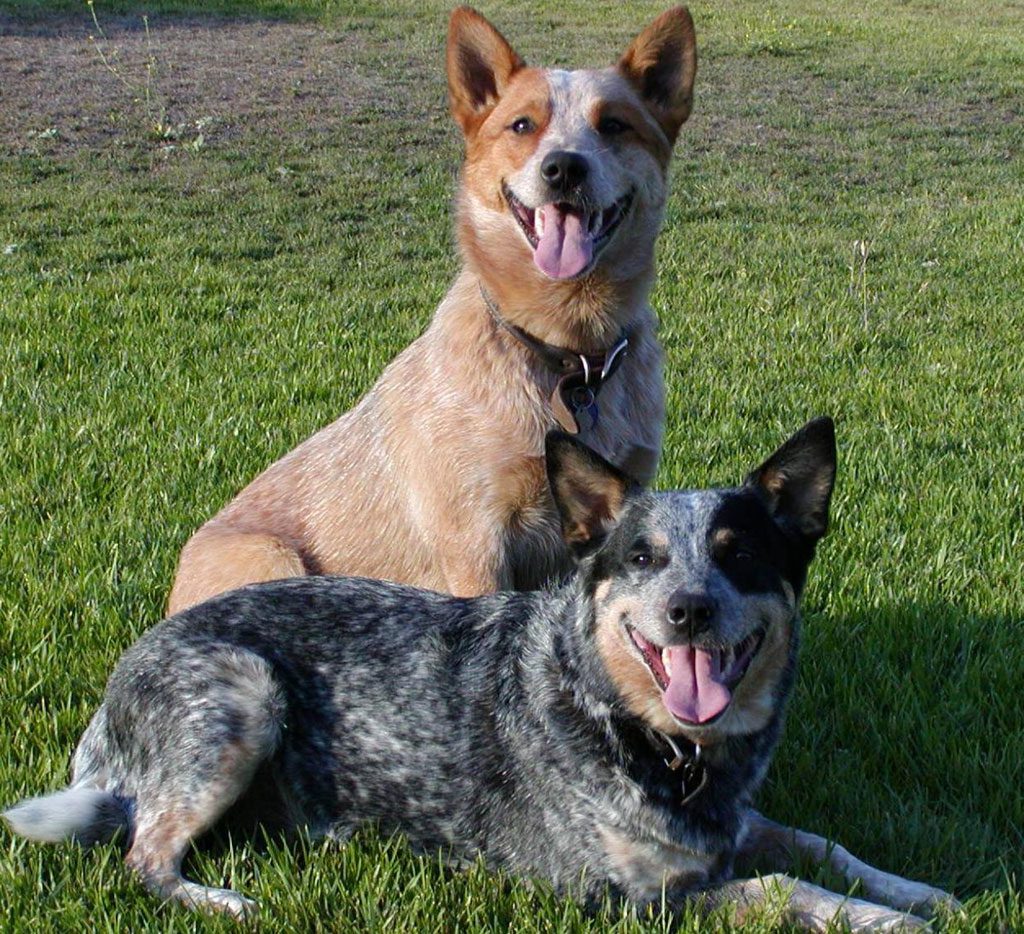
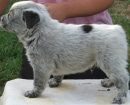
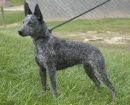
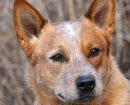
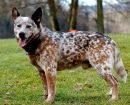
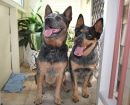
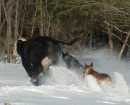
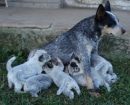
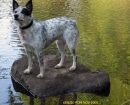

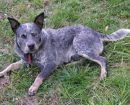
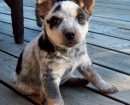
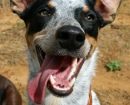
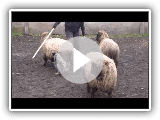 Taz’s First Herding Lesson
Taz’s First Herding Lesson 5 reasons why heelers rule…:-)
5 reasons why heelers rule…:-)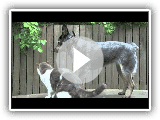 Blue Heeler and Cat Play Fight – EOMAD
Blue Heeler and Cat Play Fight – EOMAD 10 week old red heeler playing
10 week old red heeler playing
I have one called Ovi, and has little more than 1 year in a short time our love has been won, respect and admiration, is tireless, enjoy walking for long periods, sends, mountain routes, al natural.
true , good report, I have one called milton, and in a short time was to won our love, respect and admiration, is tireless, good dog for those who enjoy walking for long periods, greetings to all the owners of a dog; It is a good friend.